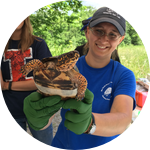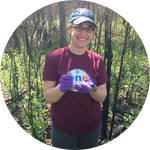Please wait...
About This Project
RNA viruses cause several important diseases in humans and animals (e.g. West Nile, Ebola, rabies) and are associated with significant mortality in captive reptiles. However, these viruses are understudied in wild reptile populations and their effects on individual survival and population stability are unknown. We aim to test wild state-endangered Blanding's turtles for RNA viruses to determine their health effects and support effective conservation strategies.

Browse Other Projects on Experiment
Related Projects
Do Australian bats have what it takes to survive the deadly White Nose Syndrome?
Australian bats are at risk from the deadly fungal disease White Nose Syndrome (WNS), which is expected...
Are climate change and air pollution triggering cardiovascular disease?
Ongoing global climate change and air pollution emissions pose a major threat to cardiovascular health...
Can blood lactate levels help guide treatment for birds suffering from monofilament line entanglement injuries?
Fishing line entanglement injuries are a common problem affecting over 200 different wildlife species globally...



